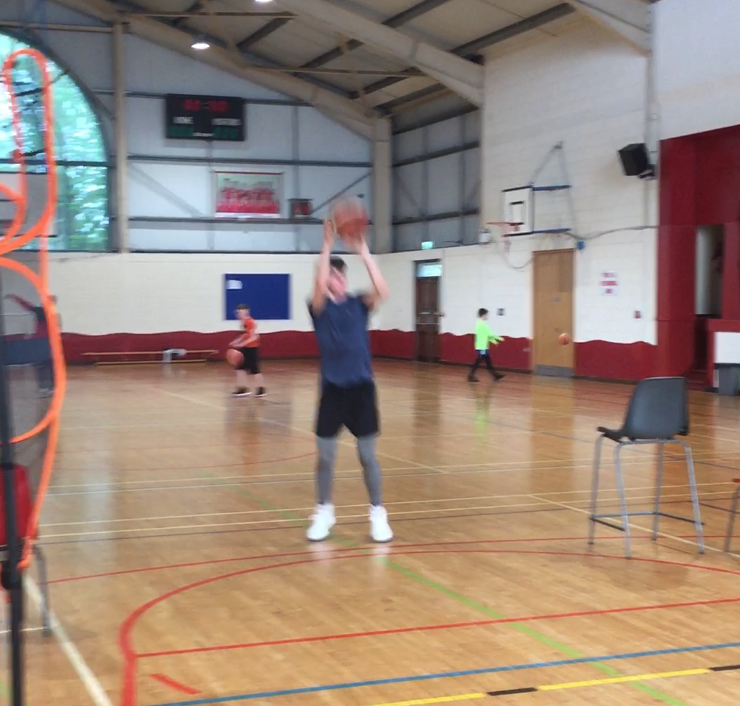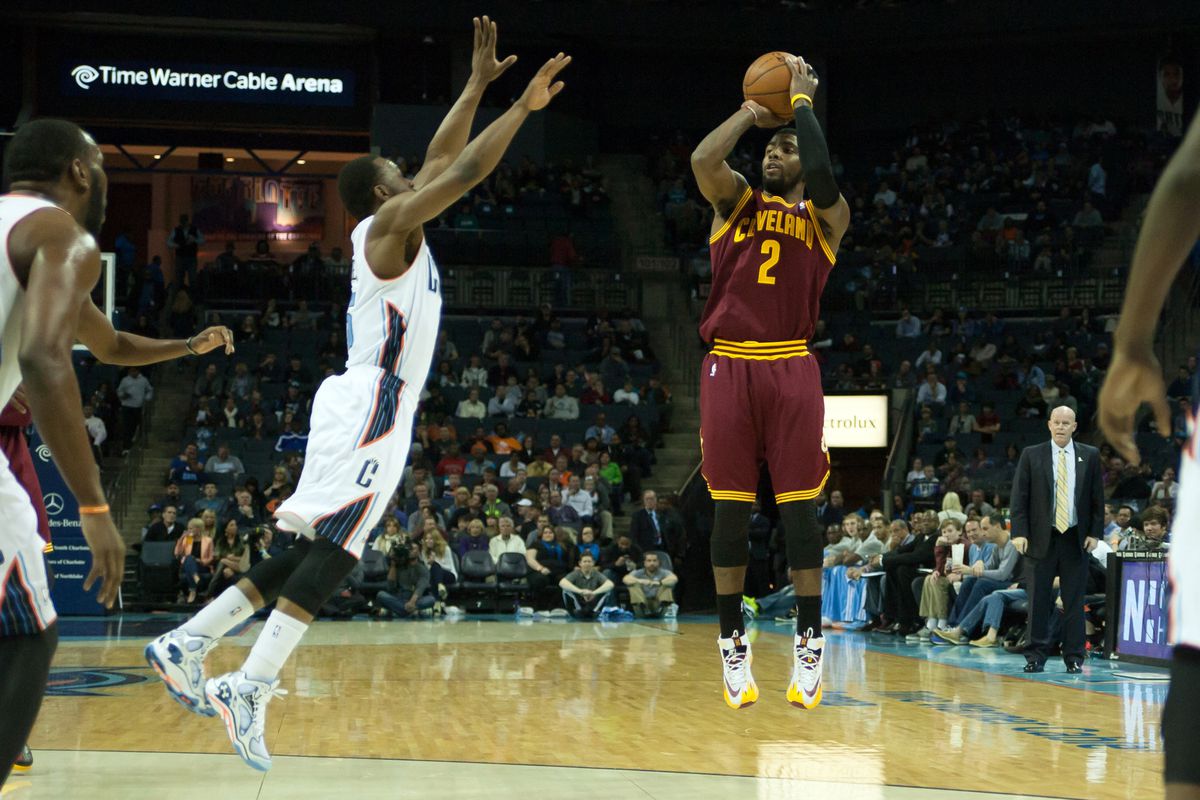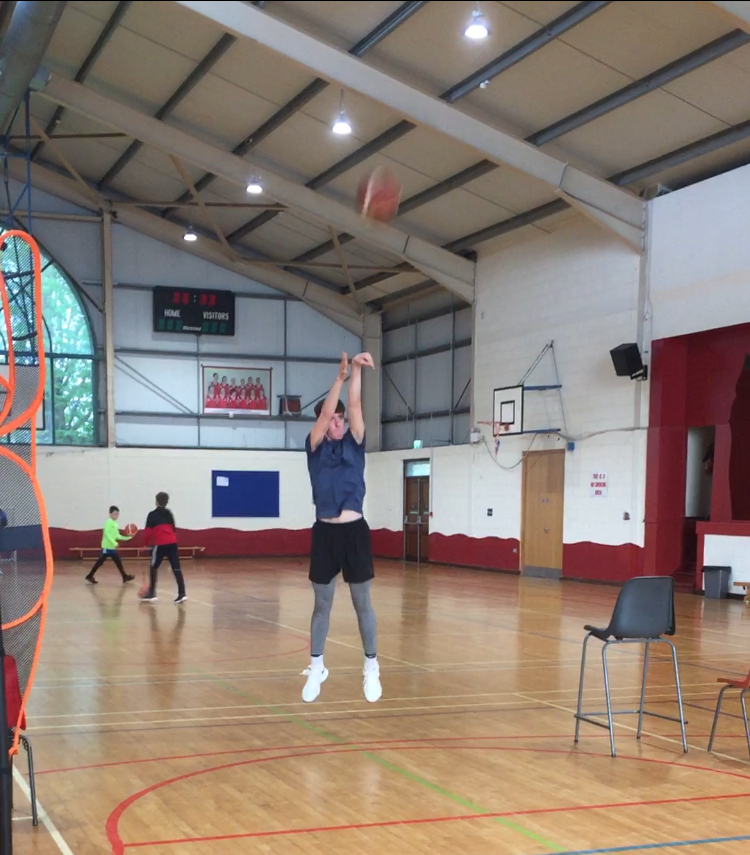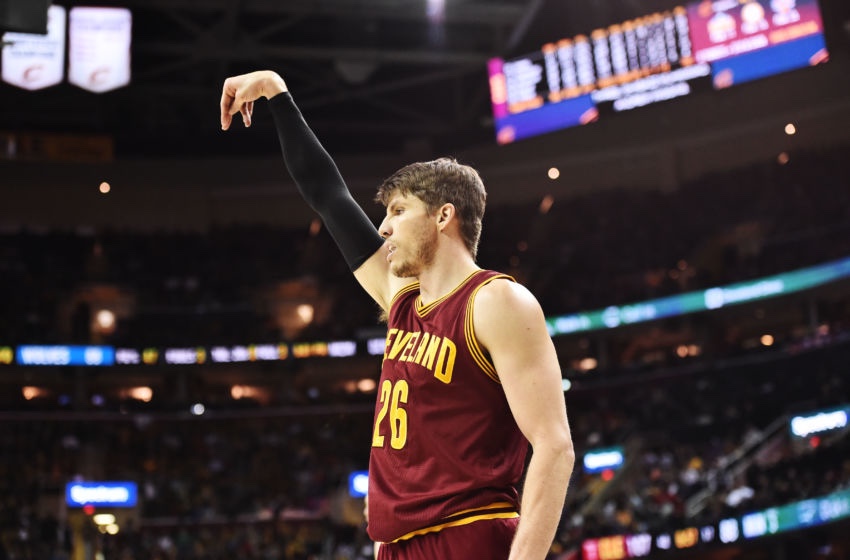What makes a good shooter great?
I’ve done a lot of experimenting with my shot over the past couple of months. A lot of things have been changed. I’ve studied a lot of players and shooter across all positions 1-5 and players from many different leagues, countries, heights and ages.
I’ve discovered a couple of things that are almost nessecisties in order to become a good shooter, in particular as a small guard, like myself, no matter where you play ball
- ‘Clean’ upper body mechanics:
Truth is theres no such thing as the perfect shot. The ‘rules’ of shooting I actually like to call guidelines. Over time a players body will adjust those guidelines to make them suit their body. For example, watch how Stephs guidehand actually tends to finish kind of behind his shooting wrist.
Or, watch here how Kyries guidehand thumb flicks the ball and turns completely on the follow through.
These tend to be BIG ‘no no’s’ among coaches. But, I’ve come to find from my studies that players bodies will adjust these ‘rules to suit their bodies overtime and reps, using the rules as a template and build from there. For me a big one is four fingers down as it cuts out the other fingers interfering with the flight of the ball. A lot of the top shooters do this like Steph, Klay and JJ Reddick, but theres way more players who don’t than do. Thats why its important to read up and find what works best for you.
A full straight follow through or the old ‘hands in the cookie jar saying’ is also a must for me like many great shooters. I don’t mean you have to hold your follow through as this creates a lot of tension in the shoulders which can lead to discomfort and inconsistency, but follwing it through the basket will lower the chances of your shots going side-to-side.
Also, having good upper body mechanics is important especially for small guards and post players actually because you will have to readjust yourself in the air quite a lot e.g: on turnaround shots and faceups for post-ups and shooting off balance for guards. Having good mechanics in the upper half make it much easier to square up to the basket when taking contact of hitting stepbacks.
I’ll put it this way. Look how limited Lonzo ball is offensively with his shot versus any other guard. He can only stepback and hit turn-arounds one direction because of how f@cked up his upper body mechanics are. Compare that the Kobe who had brilliant mechanics. He could shoot from anywhere whenever because of how clean his mechanics were.
2. Pop or no pop:
This has been and still is a hot topic and debate I’m having with myself and other coaches, players and shooters.
What I mean by ‘pop’ is how much air time you get under your shoot in relation to where you release the ball to actually shoot it. Too much pop leads to uncontrolled shots and too little pop means you wont get that shot off against a defender.
There are essentially two types of shots:
The first being that you release the ball on the way up into your shot like Steph Curry. This is called a one motion shot. The other is that you jump as high as you can and then shoot. This is how Ray Allen shot. Both have their advantages and disadvantages
A. One Motion no ‘pop’:
Shooting in one motion is a lot more consistent and quicker. It takes less energy so you can shoot more of them. The downside however, you need more space to get it off. This is why you see players like Trae Young and Steph shooting from so far out to avoid the length and athlecism of the defenders in the NBA. A quick release also helps one motion shooters. The quick release can allow you get the shot off with very little time and seperation from a defender. With me, I’m developing a quick release just through reps of shooting. I find it just comes naturally when you get your mechanics down and get in those important game speed reps.
B. Two Motion ‘pop’ shot:
Two motion shots allow you to get your shot off easier in traffic. You essentially out-jump the defence and hang their long enough to avoid any shot blockers. A lot of the best iso players like Kyrie, KD, Harden and IT have two motion shots to make it easier to get their shot off. Although there have been and still are many great two motion shooters (JJ Reddick, Kyle Korver) it is a lot more tiring and strenuous on the body.
Also, Guards and bigs will need a two motion shot at some point. Imagine trying to shoot a fadeaway or doing the famous Kobe turnaound fadeaway without hanging in the air. It’s impossible. Lets have a look at the two different shots here.
Watch here how much lower to the ground Steph is and the amount of more space Steph needs to shoot compared to IT who hangs in the air before he shoots.
A lot of the shots IT takes would be impossible for Steph. Thats why Steph has developed such an incredible floater game as his go-to mid range shot as its easier and quicker get off than his mid-range shot and it needs little to no seperation from the defence.
Personally, ‘pop’ wins this argument for me. Almost every small guard I’ve watched gets a hell of a lot of pop on their shots AND has a really good floater game. So for all y’all small players reading this remember that. Don’t choose one or the other. Small guards need to be able to do everything.
I find a hybrid the two types is what works for me. I need the hang time to get my shot off, but jumping too high messes up my upper body mechanics and a quick release. So, I hang but just not as high as I can to get my shot off in the midrange. I’m struggling to even get off the ground from 3 which is as unusual as it sounds. I’ve discovered thanks to my coach that my feet actually don’t leave the ground until after I’ve shot the ball.


Notice how my feet are still on thr ground when my hands are just about to release the ball, whereas with Kyrie hes well off the ground. The ball is well out of my hands around the height Kyrie is about to shoot at.

This little flaw is the one thing thats holding me back from becoming a lights out shooter as it limits my ability to get my shot off when contested. Its the hardest correction to make as I’m struggling to figure out how to readjust it. I had the same problem with my midrange but I was able to fix that easily as it could just hang there as less power was needed. From deep however I need a lot more legs but holding onto the ball in the air a bit longer and shooting it means I come up way short as I can get the power into my shot. It will take time but I’ll figure it out.
Filming your shot and comparing it to the rules and other shooters around your height (for me thats IT, Kemba, Campazzo and Byrce Monroe) will help you get better. You can see what mechanics and moves allow them not only be good shooters, but what allows them to get their shot off everytime.
So there you have it. Those are the two main keys that go into my shot. This only part one of this Series. I do plan on doing posts on the Physics behind shooting and how I use my love for Sports Performance training to train to become a more effective shooter and athlete altogether. Let me know what I should name this series. I’ve lots of knowledge I want to share with you all.
Until next time,
Stay workin’
Aaron.


Leave a comment